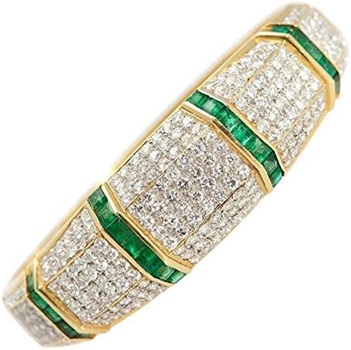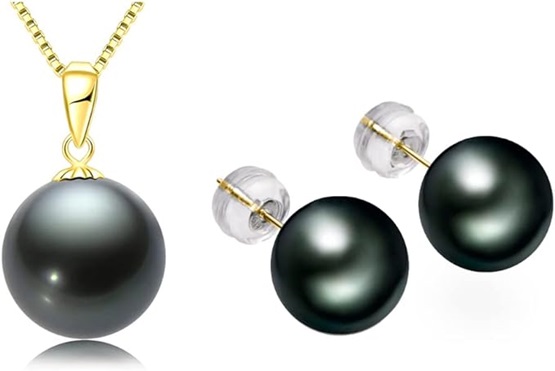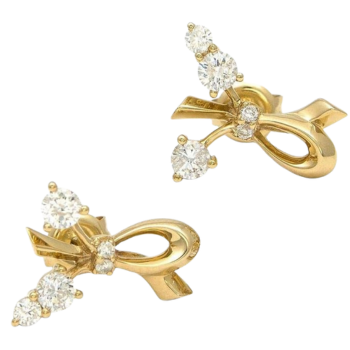Yellow Gold Cosmic Origin Theory: |
How Are Yellow Gold and Other Heavy Elements Created?
The story of Yellow Gold begins in the vast expanse of the universe, long before the Earth took shape. Stars, through their life cycles of birth and death, set the stage for the creation of Gold. Supernova explosions and neutron star collisions forge Gold and other heavy elements. These cosmic fireworks scatter Gold across the cosmos, marking the beginning of its journey to Earth.
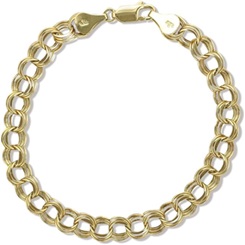
|
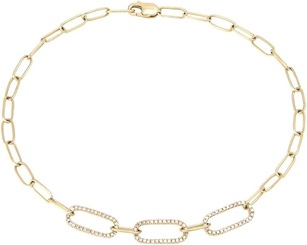
|
|
| 14 Karat Yellow Gold 7 Millimeter Wide Triple Link Charm Bracelet | 14k Yellow Gold Fashion Single Cut Micro Pave Set 0.20 dwt Diamond Bracelet |
Click On The Images
How Are Neutron Star Collisions Important for Gold Creation?
The Power of Kilonovas:
When two neutron stars collide, they unleash a colossal explosion known as a Kilonova. The astronomical event even outshines entire galaxies for a brief moment. Kilonovas, spectacular to witness through telescopes, serve as cosmic cauldrons that forge some of the universe’s heaviest elements.
A Crucible for Heavy Elements:
The intense conditions during a neutron star collision create a unique environment. This extreme ambiance is ripe for the creation of heavy elements. Gold, platinum, and uranium, among others, are synthesized in these violent, neutron-rich explosions. The process involves rapid neutron capture by nuclei. It is a critical step in forming these heavy, complex elements.
The Origin of Nature’s Heaviest Elements:
Scientists have long pondered the origins of the heaviest elements found naturally on Earth. The consensus is that only the most extreme environments, such as neutron star mergers and supernovae, have the necessary conditions for their creation. These cosmic events act as nature’s foundries. They craft the periodic table’s heaviest members amidst chaos and immense energy.
| How Was Gold Incorporated Into Earth During Its Formation Years? Dive deep into Earth’s early years to discover the cosmic events that contributed gold to our planet’s composition, making it the cherished metal it is today. |
|
| Understanding the Timeless Appeal of Yellow Gold: Explore why yellow gold has captivated cultures worldwide with its luster and enduring value through the ages. |
|
| Why Yellow Gold Remains a Popular Choice in Jewelry: Unravel the reasons behind yellow gold’s unflagging popularity in jewelry, from its rich history to its warm, inviting glow. |
|
| The Allure of 14k and 18k Yellow Gold in Today’s Market: Discover the appeal of 14k and 18k yellow gold in modern jewelry, striking the perfect balance between purity, durability, and affordability. |
|
| How The Hue And Purity Of Gold Impact Its Appeal And Value: Learn how the hue and purity of gold influence its overall appeal and market value, guiding consumers in their purchasing decisions. |
|
| The Distinct Differences Between Yellow Gold and White Gold: Delve into the unique characteristics that distinguish yellow gold from white gold, including composition, appearance, and style preferences. |
|
| The Role Of Alloys In Creating The Unique Characteristics Of Gold Jewelry: Understand how alloys are used to enhance the strength, color, and workability of gold jewelry, creating diverse options for consumers. |
|
| Navigating the Choice Between Yellow Gold and White Gold for Engagement Rings: Tips for couples on choosing between yellow gold and white gold for their engagement rings, considering aesthetics, durability, and personal style. |
|
| Choosing the Perfect Gold Engagement Ring: A guide to selecting the ideal gold engagement ring that captures the essence of love and commitment, tailored to personal preferences and lifestyle. |
|
| Matching Diamonds and Gemstones with the Warm Tones of Yellow Gold: Insights on how to pair diamonds and gemstones with the warm tones of yellow gold to enhance their beauty and create stunning jewelry pieces. |
|
| FAQ: Find answers to frequently asked questions about yellow gold, helping you make informed decisions about your jewelry investments. |
How Was Gold Incorporated Into Earth During Its Formation Years? |
Approximately 4.6 billion years ago, Earth formed from cosmic debris, including Gold, pulled together by gravity. Most of the Gold sank into the Earth's core due to its density. Therefore, little precious metal remains on our planet's surface.
What Role Did Asteroids Play in Bringing Gold to Earth's Surface?
The Gold near the Earth's surface today is mainly due to the heavy bombardment period four billion years ago. At this time, asteroids rich in Gold and other metals struck the young Earth. These impacts scattered Gold across the surface, embedding it in the crust.
How Have Earth's Geological Processes Unearthed Gold?
Over millions of years, Earth has seen geological activities like plate tectonics, volcanic eruptions, and erosion. These events have concentrated the scattered gold deposits. Consequently, the gold deposits are more accessible. And mining activities have extracted the Gold for thousands of years.
How Significant Are Binary Neutron Star Mergers in Gold Production?
Recent studies, including those by MIT and the University of New Hampshire, have revealed that binary neutron star mergers have played a significant role in the production of heavy metals over the last 2.5 billion years. These findings emphasize the importance of such cosmic collisions in enriching the universe with Gold.
What Does Gold's Journey Tell Us About Our Connection to the Universe?
The journey of Gold from cosmic events to Earth adds layers of wonder to this precious metal. The realization that Gold originated from the violent collisions of neutron stars billions of years ago enriches our understanding of the universe. This story serves as a reminder that we and everything we value are made of star stuff, connecting us to the vast history of the cosmos.
3.5ct Princess Cut Emaerald & Sim Diamond Womens Bangle Bracelet 14k Yellow Gold
Click On The Image
Understanding the Timeless Appeal of Yellow Gold: |
With its lustrous, sun-kissed hue, Yellow Gold embodies beauty and charm that have captivated hearts for centuries. Its allure lies in its radiant appearance and rarity, adding to its preciousness. This metal's warm glow brings a sense of luxury and elegance to any piece of jewelry, making it highly sought after. Beyond its beauty, yellow Gold's malleability allows for intricate designs that stand the test of time. Ergo, it is a favorite among jewelers. Its unique blend of allure and rarity ensures that yellow Gold remains a symbol of enduring elegance and sophistication.
Natural Color Of Gold:
Gold's natural color is a metallic yellow, a hue due to the metal's absorption of some light frequencies more than others. This distinctive color is unique to Gold and results from its electron structure. The natural yellow color of Gold has made it a symbol of purity, value, and beauty throughout history, distinguishing it from other metals and making it highly prized for jewelry and ornaments.
Why Yellow Gold Remains a Popular Choice in Jewelry: |
Yellow Gold continues to shine brightly in jewelry for several compelling reasons.
Hypoallergenic Nature:
Gold's hypoallergenic nature makes it a safe choice for many, reducing the risk of skin irritations from metal. The allergy-free aspect makes yellow Gold an attractive option for everyday wear. Thus, you achieve elegance without sacrificing comfort.
Inherent Durability Of Gold And How Alloys Reinforce Yellow Gold's Longevity For Timeless Jewelry:
The durability of the Gold is another significant factor. While pure Gold, or 24 karat, is soft, the alloys mixed with yellow Gold for jewelry enhance its strength. The enhancement makes it perfect for items that endure over time, such as wedding rings and diamond rings. This durability ensures that a piece of jewelry lasts and retains its beauty and structural integrity through years of wear.
Moreover, the unique warmth of yellow Gold brings a special touch. It highlights gemstones and makes them stand out with unparalleled radiance. This characteristic makes yellow Gold a preferred metal for jewelry. It offers a classic backdrop that enhances the stone's brilliance without overshadowing it.
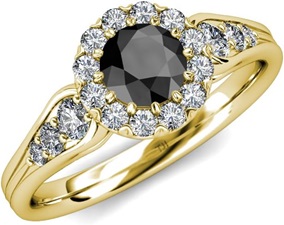
|
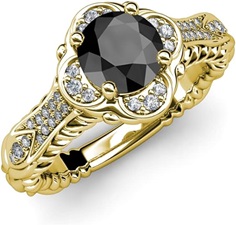
|
|
| Black Diamond & Natural Diamond Cupcake Halo Engagement Ring 1.40 ctw 14K Gold | Round Black & White Diamond Floral Women Halo Engagement Ring 14K Gold |
Click On The Images
The Allure of 14k and 18k Yellow Gold in Today's Market: |
Gold's Luxurious Luster: The Choice Between 18k and 14k
In the jewelry world, yellow Gold symbolizes elegance and durability, with jewelers and buyers particularly seeking 14k and 18k Gold. These two varieties balance purity, practicality, and the warm, classic hue that gold enthusiasts adore.
18k Gold: Richness and Purity Combined
Rich color and substantial gold content glorify 14k and 18k Gold. For instance, 18k Gold comprises 75% gold and 25% alloy, making it closer to Gold's natural luster. It also maintains enough strength for daily wear. Its deeper yellow color appeals to those seeking a luxurious piece and indicates higher gold content.
14k Gold: Durability Meets Beauty:
Conversely, 14k Gold, with a 58.3% gold ratio, offers a slightly lighter shade. Common alloys like copper and zinc impart a lighter shade. At the same time, they make it more durable than its 18k counterpart. The ratio of alloy added to 14k Gold ensures relative softness. The retained malleability lets you craft intricate designs without sacrificing the durability required in jewelry.
Making the Right Choice: Lifestyle and Aesthetics:
The choice between 18k and 14k yellow Gold often comes down to personal preference and lifestyle needs. Jewelry lovers prize 18k Gold for its higher gold content and vibrant hue. Meanwhile, they laud 14k Gold for its resilience and suitability for a more active lifestyle. Both offer a timeless appeal, but the Karat value dictates their use in the market. People often choose 18k for more ceremonial or decorative pieces. On the other hand, many favor 14k for everyday jewelry that withstands the rigors of daily life.
In conclusion, the allure of 14k and 18k yellow gold in today's jewelry market is undeniable. Each offers a unique blend of beauty, practicality, and durability.
How The Hue And Purity Of Gold Impact Its Appeal And Value: |
The hue and purity profoundly influence the allure and value of yellow Gold in jewelry. These elements define Gold's aesthetic and tactile qualities, significance, and durability.
Hue: The Warmth of Wealth
The distinctive warm glow of yellow Gold has long been a symbol of wealth and prestige. Naturally occurring in Gold, this hue can vary slightly based on the higher ratios of base metals mixed with pure Gold. Alloys with silver, copper, and zinc can subtly alter the depth and intensity of Gold's color, catering to different tastes and styles. The rich, vibrant hue of high-karat gold jewelry captures attention and signifies luxury, making it a coveted choice for those looking to express their status and style.
Purity: A Measure of Value:
Gold's purity, measured in karats, directly impacts its appeal and market value. Pure Gold, known as 24 karat, is too soft to be used in most jewelry. Consequently, jewelsmiths create alloys to increase durability. However, lower karat ratings, which indicate higher ratios of base metals, affect the overall durability, color, and value of the Gold. For instance, 18-karat Gold, with 75% gold content, perfectly balances purity and strength. Jewelry made out of 18k Gold withstands the test of time without losing its intrinsic value.
Durability: The Practical Aspect of Beauty:
The addition of base metals to create lower-karat Gold not only affects its hue and purity but also enhances its durability. This practical aspect is crucial for everyday jewelry pieces, ensuring they can endure daily wear and tear while maintaining beauty. Overall durability is a significant consideration for buyers, as it determines the longevity and wearability of the jewelry.
In conclusion, the hue and purity of yellow Gold are central to its appeal and value in the jewelry market. These characteristics influence Gold's aesthetic and tactile qualities and durability.
Tahitian Black Pearl Stud Earrings and Necklace 18K Gold Genuine Cultured Pearl Jewelry
Click On The Image
The Distinct Differences Between Yellow Gold and White Gold: |
Comparing The Composition And Color Of Yellow Gold To White Gold:
| Aspect | Yellow Gold | White Gold |
|---|---|---|
| Composition | Mixture of pure gold with alloys like copper and zinc. | Mixture of pure gold with white metals (palladium, nickel, silver) and often plated with rhodium. |
| Color and Appearance | Warm, rich yellow color, classic and timeless appeal. | Silver-white appearance, modern and sleek look. |
| Durability and Maintenance | Softer, more prone to scratches but easily polished. Requires regular cleaning and occasional polishing. | More durable due to hard alloyed metals. Rhodium plating wears off and requires re-plating. |
| Hypoallergenic Properties | Generally more hypoallergenic, suitable for sensitive skin. | May cause allergic reactions, especially if alloyed with nickel. |
The Role Of Alloys In Creating The Unique Characteristics Of Gold Jewelry: |
Yellow and White Gold: A Comparative Analysis:
Yellow Gold is what comes to mind when we think of gold jewelry. Alloying pure Gold with metals like copper and silver achieves its classic golden hue. For instance, 14K yellow Gold typically comprises 58.5% fine gold, 29% copper, and 12.5% fine silver, while 18K yellow gold contains 75% fine gold, 15% copper, and 10% fine silver. These alloying metals contribute to the color and improve the durability and workability of Gold, making it suitable for intricate jewelry designs.
On the other hand, White Gold offers a modern twist with its silvery-white appearance, achieved by blending Gold with metals such as palladium, zinc, nickel, and sometimes even platinum for a luxurious finish. This variety often appeals to those seeking an alternative to platinum, offering a similar aesthetic at a more accessible price point. White Gold's allure lies in its versatility, pairing beautifully with a wide range of gemstones and suiting various classic and contemporary design styles.
The Magic of Alloys:
Alloys play a crucial role in the jewelry world, allowing for various colors and properties in gold jewelry. By adjusting the blend of alloying metals, artisans can alter the hardness, color, and workability of Gold. For example, adding silver to Gold creates a more malleable alloy ideal for intricate designs, while copper adds strength and a unique color tint, crucial for creating rose Gold with its warm, blush tones.
Additionally, palladium and nickel are used in white Gold to achieve the desired color and durability. Palladium, in particular, lends a bright silvery-white hue and hypoallergenic properties, making it a favored choice for sensitive skin. The versatility of gold alloys extends beyond just yellow, white, and rose Gold, with possibilities for green, blue, and even black Gold, each offering a distinct look and feel.
In Conclusion:
The alchemy of gold alloys is a testament to human creativity and our enduring fascination with this precious metal. Jewelers can craft pieces that meet modern consumers' aesthetic and functional demands by carefully selecting and combining alloying metals.
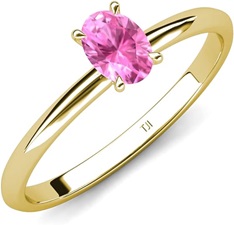
|
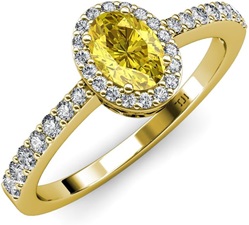
|
|
| Oval Cut Pink Sapphire 1.00 ctw Knife Edge Four Prong Women Solitaire Engagement Ring 14K Yellow Gold | Sapphire & Natural Diamond (SI2-I1,G-H) Halo Engagement Ring 1.43 ctw 14K yellow Gold |
Click On The Images
Navigating the Choice Between Yellow Gold and White Gold for Engagement Rings: |
Durability and Maintenance:
White Gold is generally considered more durable and scratch-resistant than yellow Gold due to the alloy's strength in its composition. However, it requires rhodium plating to maintain its white color, which may wear off and need reapplication. Yellow Gold, while softer, is easier to polish and repair.
Allergies:
Some individuals may react to nickel, often used in white gold alloys. If allergies are a concern, looking for hypoallergenic options is essential. Alternatively, consider yellow Gold. Metalsmiths usually alloy it with copper and silver, which are less likely to cause reactions.
Color and Style:
The choice between yellow and white Gold also depends on personal style and the aesthetic appeal of the jewelry. Yellow Gold offers a classic, warm look, while people favor white Gold for its modern, versatile appeal. It complements both casual and formal wear.
Budget:
The cost of yellow and white Gold can vary, but generally, white Gold is slightly more expensive due to the rhodium plating process. However, the price difference is usually insignificant, and both metals offer a range of options to fit various budgets.
Ultimately, the choice between yellow and white Gold for an engagement ring boils down to personal preference, lifestyle, and how each metal complements your skin tone and the chosen gemstones. Whether you prefer the rich tradition of yellow Gold or the sleek, contemporary look of white Gold, both metals offer unique charm and beauty to symbolize your love and commitment.
Choosing the Perfect Gold Engagement Ring: |
When choosing a yellow gold engagement ring, focus on these essentials:
Metal Quality and Karat:
Yellow Gold's allure lies in its rich hue and historical significance, cherished for thousands of years. Karat measurements determine the purity of Gold, with 24K representing pure Gold. However, for added durability, Gold is alloyed with other metals. Alloying proportions make 18K, 75% gold, and 14K, 58.3% gold, popular choices for engagement rings. Higher karat gold will be softer and more prone to scratches. But it will also have a richer color and higher value.
Setting and Style:
The setting of your engagement ring plays a pivotal role in its overall appearance and the security of the diamond. Prong settings, featuring four to six metal supports, are well-loved for their classic look. Furthermore, the way they allow light to enter the diamond enhances its brilliance and fire. Bezel settings, where the metal encases the diamond's perimeter, offer increased protection for the stone and are ideal for active lifestyles.
Side Stones and Design Elements:
Adding side stones, such as diamonds or colored gemstones, can enhance the ring's visual appeal and create a unique look. Options include:
- Three-stone settings.
- Halos surround the central diamond to make it appear larger.
- Pavé settings where tiny diamonds are set closely together for a dazzling effect.
Durability and Maintenance:
While people prize This metal for its beauty, it is essential to consider its durability and maintenance. Gold is softer than other metals, meaning it can scratch and dent more easily. However, it can be easily polished and repaired. Choosing yellow Gold and other metals like platinum or white Gold involves balancing aesthetics, cost, and maintenance preferences.
Personal Style and Budget:
Your choice should reflect the wearer's style and your budget. The Yellow metal hue offers a warm, classic look that pairs beautifully with various diamond colors and styles. It's also important to consider how the metal color complements the wearer's skin tone and the diamond's color grade.
Ethical Considerations and Customization:
Opting for ethically sourced materials and custom designs can add personal significance and value to your engagement ring. Many jewelers offer custom design services, allowing you to create a truly unique ring that reflects your personal story and values.
Selecting a yellow gold engagement ring involves more than just choosing a piece of jewelry; it's about finding a symbol of love that resonates with personal taste, lifestyle, and values.
14k Yellow Gold Fashion Round Cut Prong Set 0.57 dwt Diamond Earrings
Click On The Image
Matching Diamonds and Gemstones with the Warm Tones of Yellow Gold: |
Yellow Gold's warm hue enhances the beauty of diamonds and colored gemstones, creating a striking contrast that complements the overall design. The right pairing of metal and stone significantly elevates a piece's aesthetic appeal.
For Diamonds:
Yellow Gold's classic appeal is ideal for diamond settings, as its warm tones enhance the diamond's brilliance and provide a beautiful contrast. Selecting diamonds with a slight color can make them appear brighter against yellow Gold. Additionally, the choice of setting plays a key role. It affects both the ring's appearance and the diamond's security.
For Colored Gemstones:
Colored gemstones set in yellow Gold create visually captivating pieces, as the metal's warmth complements and enhances the gemstone's color. Gemstones like sapphires, rubies, and emeralds are particularly striking when set in yellow Gold. The metal can highlight the depth and richness of the gemstone's color, making it pop. Yellow sapphires and citrines blend seamlessly, set in yellow Gold, offering a harmonious and elegant look. For those seeking a unique piece, mixing yellow Gold with colored gemstones provides endless possibilities to create a ring that stands out with personal significance.
When choosing a yellow gold engagement ring, it's essential to consider how the metal's hue interacts with the gemstone's color. Yellow Gold complements a broad spectrum of gemstones. It highlights their beauty. These enrichments create pieces that are both timeless and personal. Yellow Gold is a versatile choice for showcasing the brilliance of diamonds or the vivid colors of various gemstones.
FAQ: |
Q: What is the difference between white Gold and yellow Gold in jewelry?
A: The main difference between white and yellow Gold is their composition and appearance. Yellow Gold is the classic gold color we're accustomed to, derived from mixing pure Gold with alloys such as copper and zinc, giving it a warm, yellow hue. Conversely, metalsmiths create white Gold by blending pure Gold with white metals such as nickel and palladium. They then coat it with rhodium. The rhodium coating enhances its whiteness. Jewelers use both types of Gold in various karats, commonly 9k, 14k, and 18k, denoting their purity.
Q: Why is pure Gold not typically used in jewelry, and how does 14k Gold compare?
A: Pure gold, 24 karats, is seldom used in jewelry because it's too soft and malleable for daily wear. This high degree of softness makes crafting pieces that can endure regular usage impractical. In comparison, 14k Gold, which contains a blend of pure Gold and other metals like copper and zinc, offers a more durable alternative. 14k Gold is slightly less intense yellow due to the alloy composition. Nevertheless, it is significantly more resilient and better suited for long-lasting jewelry.
Q: What are the benefits of choosing 18k Gold for jewelry over 24k Gold?
A: The benefits of choosing 18k gold over 24k gold for jewelry are rooted in durability and color richness. While 24k Gold is the purest form, it's incredibly soft and prone to scratching and bending. 18k Gold contains 75% pure gold and 25% alloyed with other metals. This composition strikes a balance. It maintains the luster and quantum of Gold. At the same time, it dramatically increases the piece's ability to withstand everyday wear and tear. The added alloys also contribute to a vibrant yellow color that's rich and pleasing to the eye, making 18k Gold a popular choice for those seeking a blend of beauty and practicality in their jewelry.
Q: Can you explain the role of alloys in determining the color of yellow gold jewelry?
A: Alloys play a crucial role in determining the color of yellow gold jewelry. Pure Gold is 24 karats and has a distinct bright yellow hue. However, because pure Gold is too soft for most jewelry applications, it is mixed with other metals (alloys) to enhance its strength. The types of metals used as alloys play a crucial role. Metals like copper and zinc are common choices for yellow Gold. These metals increase durability and also affect the final shade of Gold. The specific proportions of these alloys can vary, enabling jewelers to create a range of yellow gold hues, from a light, soft yellow to deep, rich Gold. The alloy composition directly impacts the Gold's appearance, making it an essential factor in crafting yellow gold jewelry.
Q: What is the significance of gold plating in enhancing the appearance of yellow gold jewelry?
A: Gold plating significantly enhances the appearance of yellow gold jewelry. Enhanced appearance is especially effective for pieces not crafted from solid Gold. By applying a thin layer of Gold, typically 18k or 24k, onto the surface of another metal, jewelers can impart a lush, genuine gold appearance to the piece at a fraction of the cost of solid gold jewelry. This technique is particularly beneficial for creating visually appealing pieces accessible to a broader range of budgets. Gold plating can rejuvenate the look of the jewelry, making it appear brand new and luxuriously yellow despite the base metal underneath.
Q: How do karat gold ratings, such as 18k or 14k Gold, affect the value of yellow gold jewelry?
A: Karat gold ratings significantly affect the value of yellow gold jewelry. This price impact occurs because karat ratings directly reflect the Gold's purity in the piece. Pure Gold is 24 karats, meaning 24 out of 24 parts are Gold. 18k Gold contains 18 parts of pure Gold and six parts of other metals, making it 75% Gold. 14k Gold is 58.3% gold, with the remainder comprising alloys. The higher the karat, the higher the gold content, and consequently, the greater the value. However, with increased gold content comes softer metal, so there is a trade-off between value, color intensity, and durability in jewelry making. Understanding these nuances can help you choose the right yellow gold jewelry that balances aesthetic appeal, value, and practical wearability.
| The Metal Platinum | Platinum Jewelry |
| Palladium Metal Attributes | Rhodium Metal Attributes |
| White Gold | Rose Gold |
| Silver And Sterling Silver | Titanium |
| Black Gold Jewelry |
